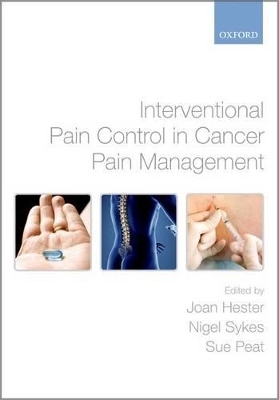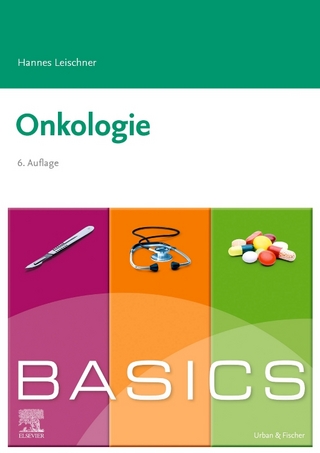
Interventional Pain Control in Cancer Pain Management
Oxford University Press (Verlag)
978-0-19-921908-7 (ISBN)
The effective management of pain from cancer is a top priority for patients, carers and healthcare professionals, and has been the subject of extensive research. Approximately two-thirds of cancer patients will experience severe pain, and many of them will have more than one pain. However, because of the increasing number of available treatments for cancer, patients are surviving for longer periods, and are developing complex consequences of their cancer and its treatment, such as central and peripheral neuropathic pain syndromes. Approximately 8 - 10% of cancer pain remains unrelieved by conventional means.
Interventional cancer pain management implies the use of invasive techniques, such as neuraxial (epidural, intrathecal and intracerebroventricular) drug administration, brachial and lumbar plexus blocks, autonomic blockade, neurolytic blocks and cordotomy. It can also include TENS, acupuncture and complementary therapies. This book describes specifically the difficult pain problems that are now faced in palliative care and highlights the need for greater collaboration between the disciplines of pain medicine and palliative care. It refers to the psychological and spiritual needs of patients, and provides patient experience data on specialist techniques. The book is an invaluable resource for all healthcare professionals working in palliative care, pain management, and primary care to inform them about the range of interventional techniques available, with evidence of efficacy, side effects and management advice.
Dr Joan Hester has worked in the National Health Service for over 40 years, and was originally a Consultant in Anaesthesia and Pain Management at Eastbourne, East Sussex, where she was also Medical Director, until moving to London in 2004. Joan now works as Consultant in Pain Medicine at King's College Hospital in London and is the Immediate Past President of the British Pain Society. She has a national and international reputation for her work in promoting understanding and education in pain management, and is a board member of the new Faculty of Pain Medicine at the Royal College of Anaesthetists. Joan has a life-long interest in cancer pain and palliative care, was co-founder of St Wilfrid's Hospice, Eastbourne, and currently works at St Christopher's Hospice in London, providing specialist pain management advice, education and support. Dr Sykes' principal research interests concern gastrointestinal and end of life symptom management in palliative care, on which he has written extensively. He also teaches widely both in the UK and abroad. Currently chair of Help the Hospices International Palliative Care Reference Group, he is also a member of the Neurological Diseases Strategy Group of the UK National Council for Palliative Care. Dr Sykes has served as Treasurer of the Association of Palliative Medicine of Great Britain and Ireland, and as a member of the Association's Executive and Ethics committees. He set up the first clinical ethics committee to be located in a hospice and has spoken on television and radio, and made presentations to British parliamentary committees, on ethical issues relating to palliative care. Dr. Sue Peat studied medicine and pharmacology at St. Batholomew's Hospital, London. She developed an interest in interventional techniques and opioid metabolism whilst undertaking higher professional training in anaesthesia at King's College Hospital. Following a period as a research fellow in the pain relief unit there she was appointed as a consultant anaesthetist specializing in pain relief, obstetric anaesthesia and undergraduate teaching. Her long connection with St. Christopher's Hospice has enabled the development of an integrated service which crosses the boundaries between acute, chronic and cancer pain management. This offers palliative patients the benefit of expertise and techniques more commonly available only in an acute pain setting.
1. Setting the scene ; 2. Difficult pain problems ; 3. Interventional pain control: background and current role ; 4. Pain mechanisms ; 5. Neuraxial (epidural and intrathecal) infusions I: anatomy, pharmacokinetics, evidence-base and commonly used drugs ; 6. Neuraxial (epidural and intrathecal) infusions II: patient selection, epidural versus intrathecal, equipment, description of the technique, complications, national use ; 7. Practical nursing management of epidural and intrathecal infusions ; 8. Peripheral blocks, plexus blocks, and intrathecal neurolysis ; 9. Blocks of the sympathetic nervous system / autonomic blockade ; 10. Cordotomy ; 11. The use of peripheral nerve and spinal cord neuromodulation in cancer pain ; 12. Transcutaneous Electrical Nerve Stimulation (TENS) and acupuncture ; 13. The patient's perspective ; Appendix 1 - Body dermatomes
| Erscheint lt. Verlag | 1.12.2011 |
|---|---|
| Zusatzinfo | 30 black and white line drawings, 36 black and white halftones, and a colour plate section |
| Verlagsort | Oxford |
| Sprache | englisch |
| Maße | 177 x 247 mm |
| Gewicht | 811 g |
| Themenwelt | Medizin / Pharmazie ► Medizinische Fachgebiete ► Onkologie |
| Medizin / Pharmazie ► Medizinische Fachgebiete ► Palliativmedizin | |
| Medizin / Pharmazie ► Medizinische Fachgebiete ► Schmerztherapie | |
| Medizin / Pharmazie ► Pflege ► Palliativpflege / Sterbebegleitung | |
| ISBN-10 | 0-19-921908-7 / 0199219087 |
| ISBN-13 | 978-0-19-921908-7 / 9780199219087 |
| Zustand | Neuware |
| Haben Sie eine Frage zum Produkt? |
aus dem Bereich


